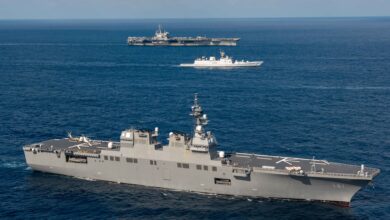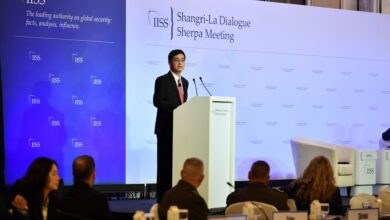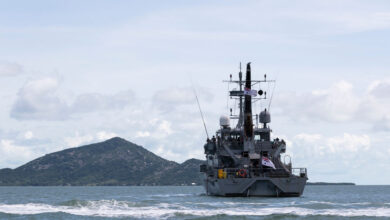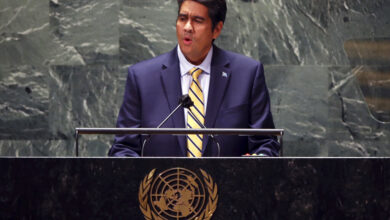Bilateral exercise demonstrates new bomber strategy in Indo-Pacific

Top Stories | May 14, 2020:
FORUM Staff
A U.S. B-1B Lancer bomber took off from the continental United States in April 2020 to team up with Japanese fighter jets in a bilateral training exercise, making a round trip of more than 30 hours before returning to its base in South Dakota.
The exercise demonstrates the U.S. Air Force’s shift to a less-predictable strategic bomber presence where aircraft based in the United States or overseas can confront threats and participate in joint or multilateral missions anywhere in the world. The April 22 exercise was the first to showcase the Air Force’s new dynamic force employment model, which is designed to provide strategic predictability while generating an element of surprise with operational unpredictability.
The bilateral exercise highlighted the United States’ “unwavering commitment to the security and stability” of the Indo-Pacific region, Gen. Charles Brown Jr., commander of Pacific Air Forces, said in a news release. “From confronting invisible threats of a global pandemic to addressing military aggression and coercive activities, we remain a lethal, innovative and interoperable force focused on a shared vision of upholding a free and open Indo-Pacific,” he said.
The Lancer flew from Ellsworth Air Force Base in South Dakota to Misawa Air Base, Japan, where it integrated with seven Japan Air Self-Defense Force (JASDF) F-2s and eight F-15s. They were joined by six U.S. F-16s based at Misawa. (Pictured: The aircraft crews train over Draughon Range near Misawa as part of a U.S. Indo-Pacific Command and U.S. Strategic Command joint bomber task force.)
The bilateral exercise commenced as Pentagon officials pushed forward with continued operations despite challenges posed by the COVID-19 pandemic. “Adversaries who think now is the time to challenge the USA: You’re dangerously wrong,” Defense Secretary Mark Esper said in a mid-April 2020 tweet.
The commander of Air Force Global Strike Command echoed Esper’s comments. “This rapid employment of air power directly supports the National Defense Strategy and assures we can provide overwhelming force anywhere, anytime in support of American interests or our allies and partners,” Gen. Tim Ray said, according to a report by military.com. “This mission is a demonstration to our friends throughout the region: We will continue to remain fully predictable in our commitment to ensuring peace, while also demonstrating that we have the ability to operate from numerous locations across the globe, even during the global pandemic.”
Added Gen. Brown: “For more than 60 years, the U.S.-Japan alliance has been the cornerstone of stability and security in the region. The integration of bomber aircraft operations in the Indo-Pacific, alongside our Koku Jieitai partners, provides a significant opportunity to enhance our combined readiness, promote interoperability, demonstrate our global power projection and provide transparency across the region.”
The U.S. bombers routinely conducts bilateral training and operations with ally and partner nations. In February 2020, two B-52 Stratofortress bombers flew alongside six Air Force F-16s and more than 45 JASDF fighter 36 aircraft near Japan.




